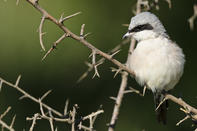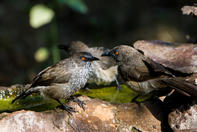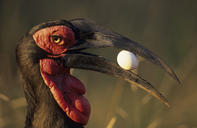Breeds Success

Co-operative breeding is a system employed by many species of birds, and a few mammals. This has developed over evolutionary periods of time because these species breed more successfully if they co-operate their breeding efforts than if pairs attempt to breed on their own.
Co-operative breeding occurs where there is a flock of birds living together but where only one pair within the flock breed, the dominant or alpha pair, and all the other members of the group perform the role of ‘helpers’.
Kinship Selection
Depending on the species, the founder flocks may be formed by a monogamous pair of birds that then integrate their offspring into the flock or it may form when a group of dispersing male birds joins up with a group of dispersing female birds.
In the latter instance, the birds will select a representative from either sex as the dominant member, whose role it will be to breed on behalf of the gene line. In both scenarios, the principle of kinship-selection is at play. The individuals are exerting less energy into the breeding effort than they would if they bred individually, and yet their genes are being perpetuated through a family representative.
Co-operative breeders experience several benefits. The breeding pair is assisted by the ‘helpers’ in the functions of collecting nesting material, incubating eggs, defending the nest site and the chicks and finding food. The ‘helper’ birds get to perpetuate their genes, with minimal effort, and in some instances may be gaining valuable information on how to raise young of their own in a co-operative context.
It goes without saying that living in flocks improves vigilance and renders the individual bird less vulnerable to predation. Some common co-operative breeders found in the Lowveld include: white-crested helmet-shrikes, green wood-hoopoes, ground hornbills, arrow-marked babblers and oxpeckers.
By Megan Emmet

